Adding Numbers up to 100 Worksheets
Adding 5 to 2 digit numbers (20 questions)
Grades: 1st Grade, 2nd Grade
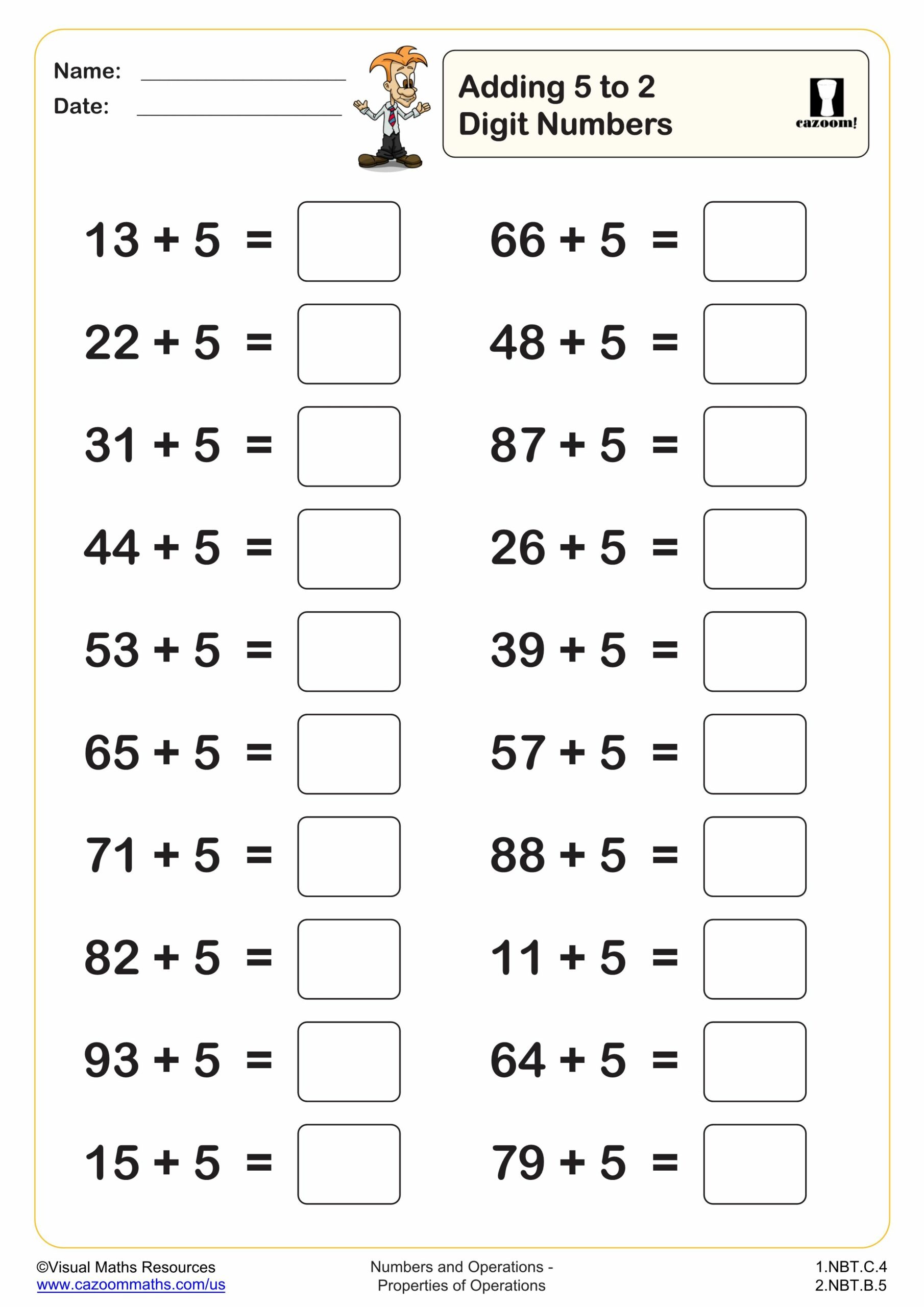
Addition Coloring (C)
Grades: 1st Grade, 2nd Grade
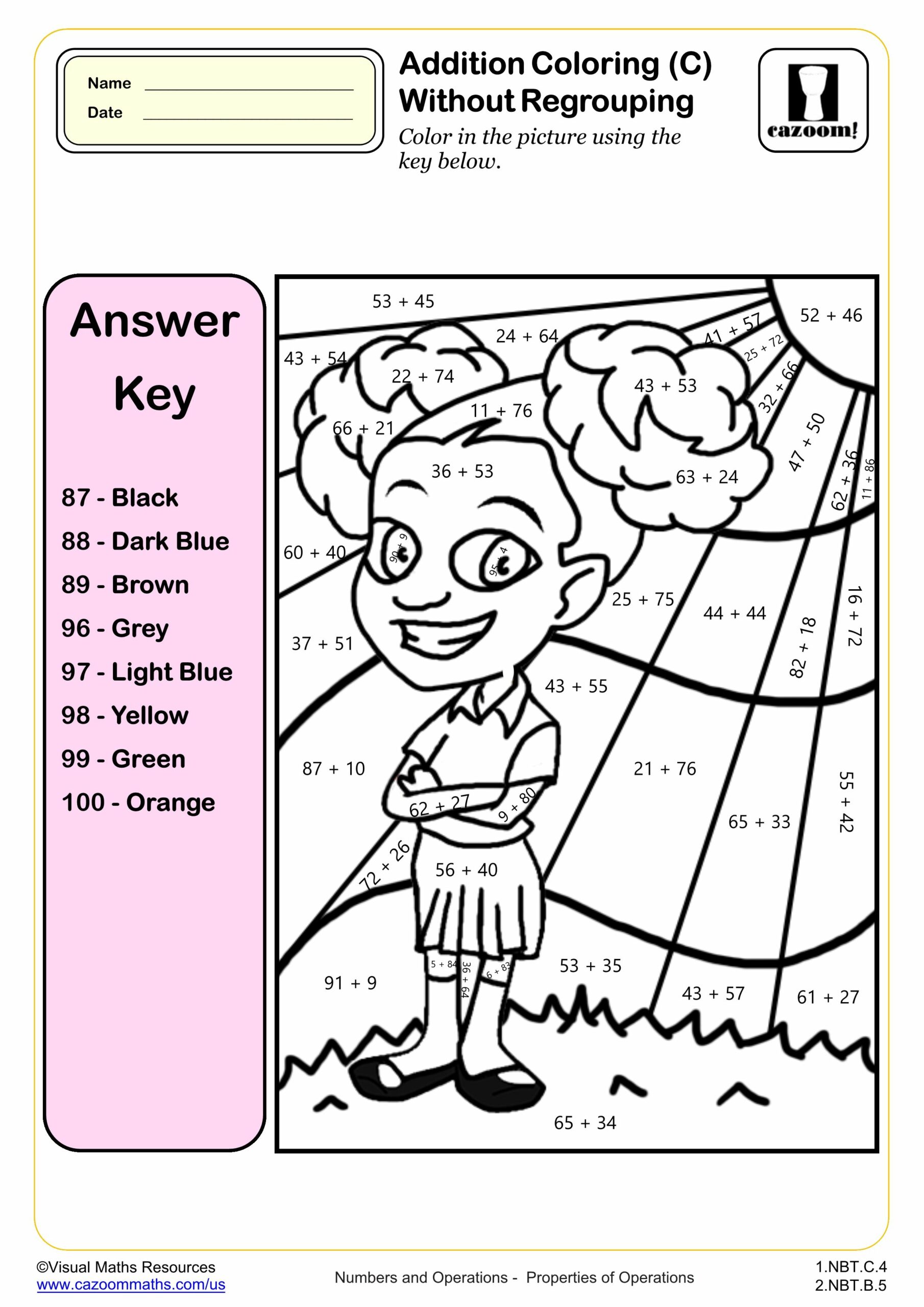
Addition Coloring (D)
Grades: 1st Grade, 2nd Grade
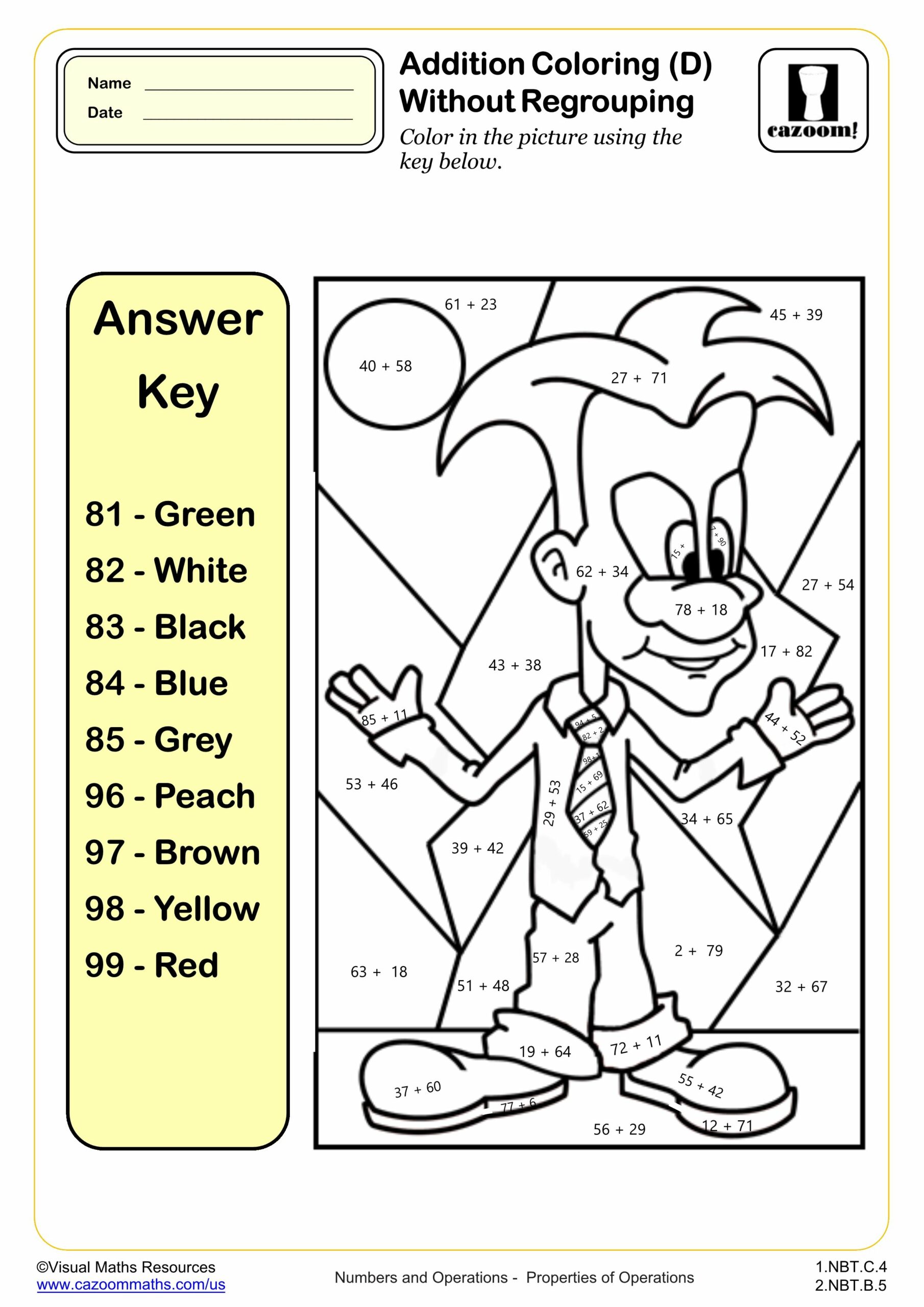
Addition Using Number Cubes (C)
Grades: 1st Grade, 2nd Grade
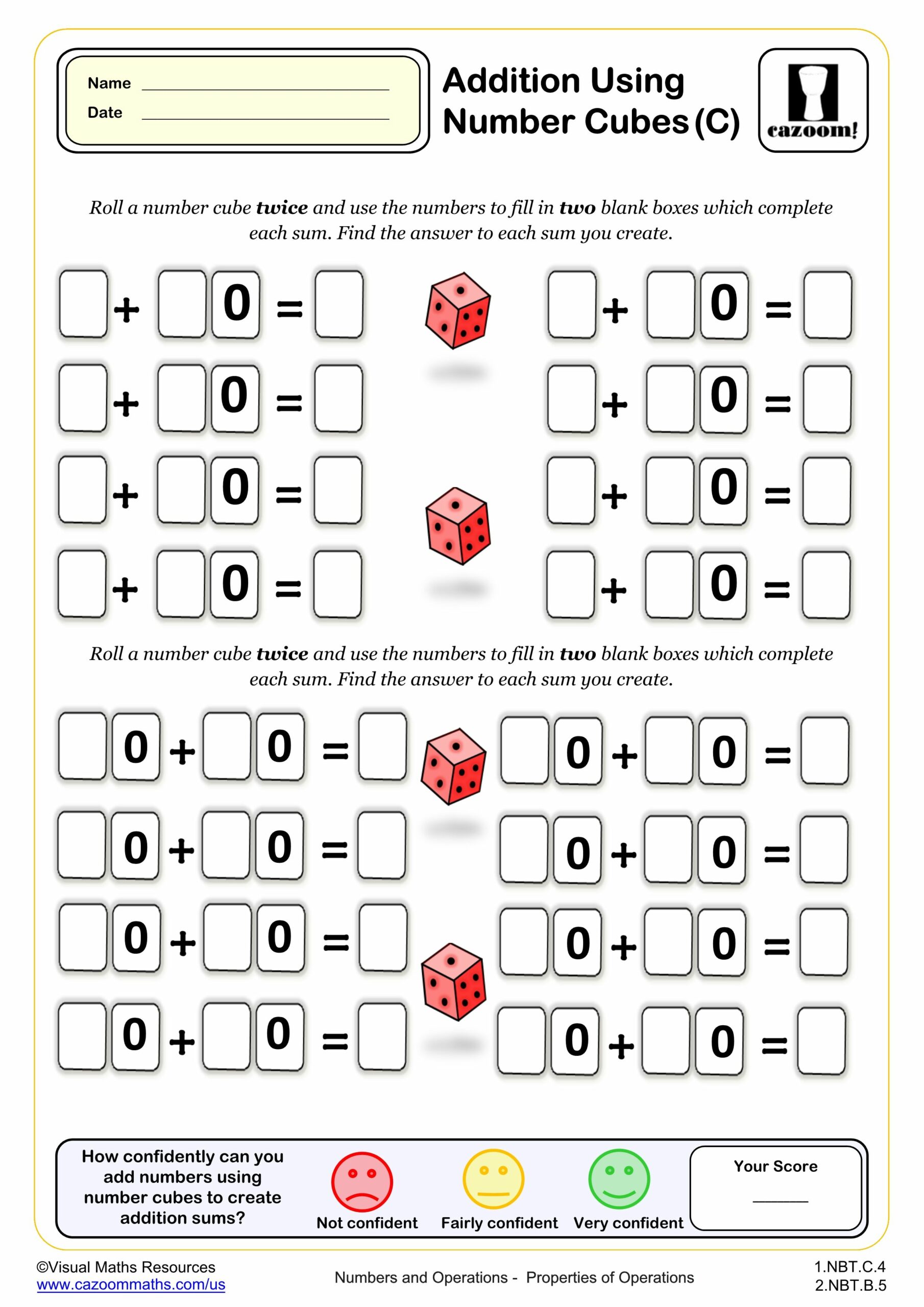
Addition Using Number Cubes (D)
Grades: 1st Grade, 2nd Grade
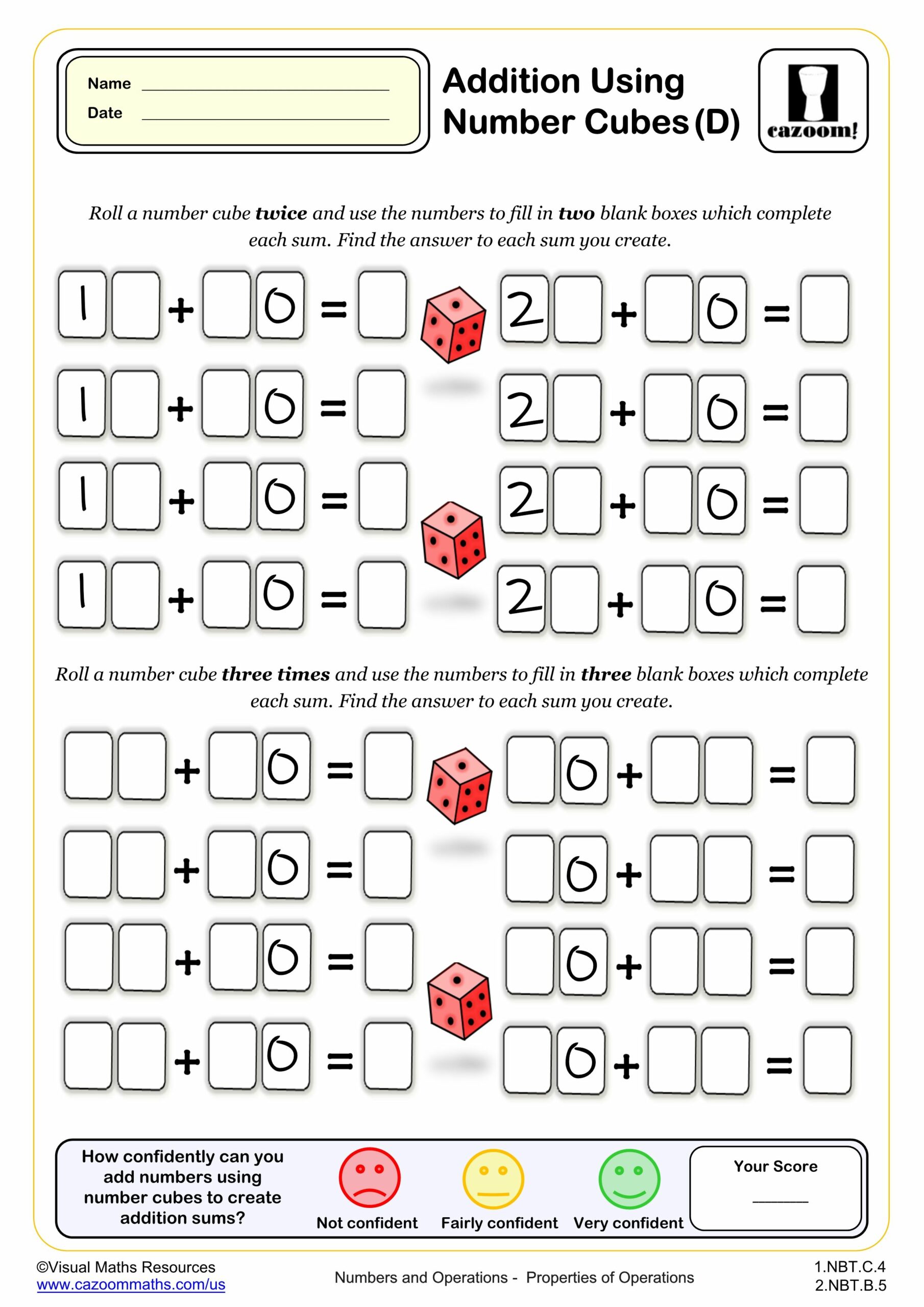
Addition Using Number Cubes (E)
Grades: 1st Grade, 2nd Grade
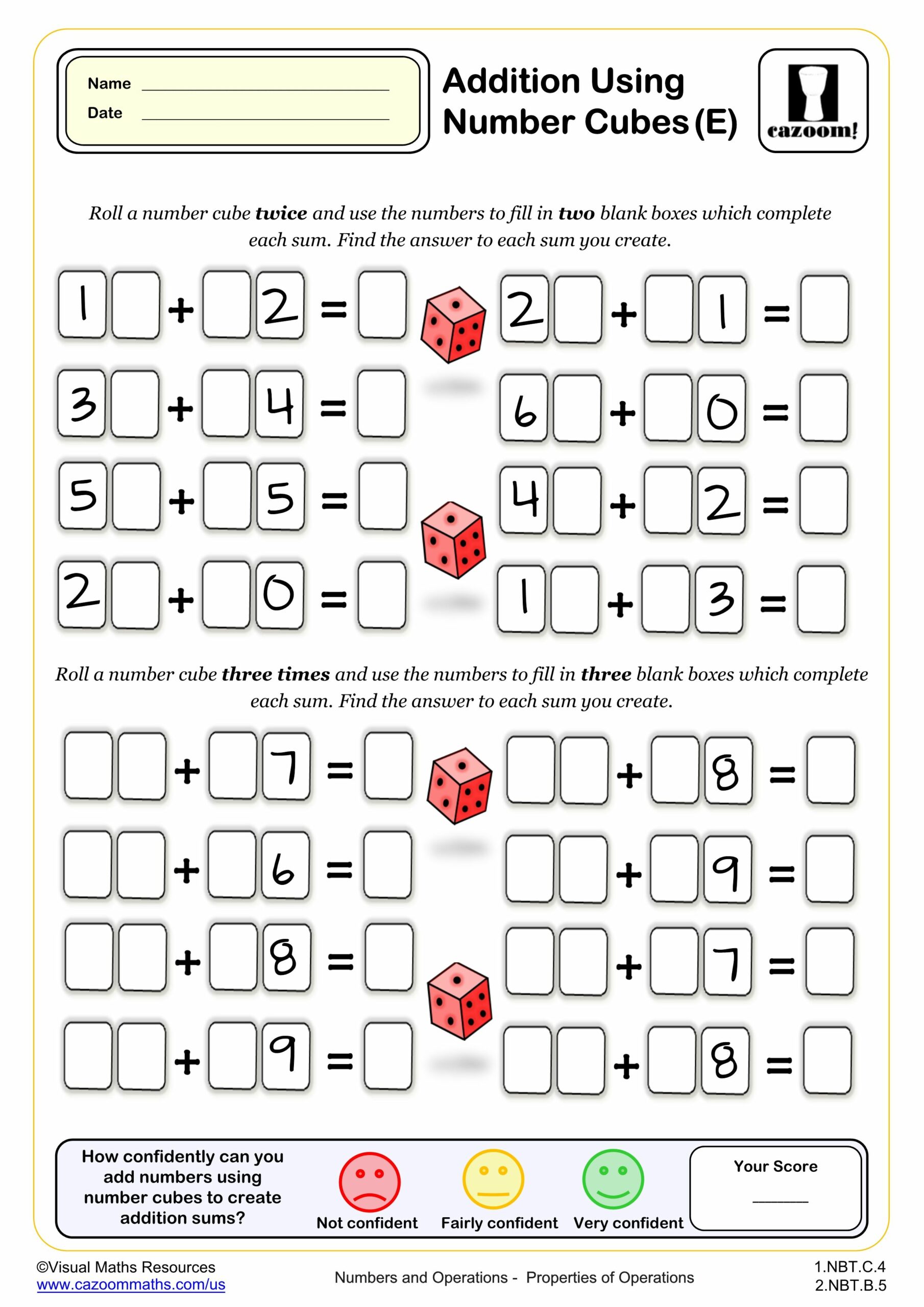
Using the Associative and Commutative Properties
Grades: 2nd Grade
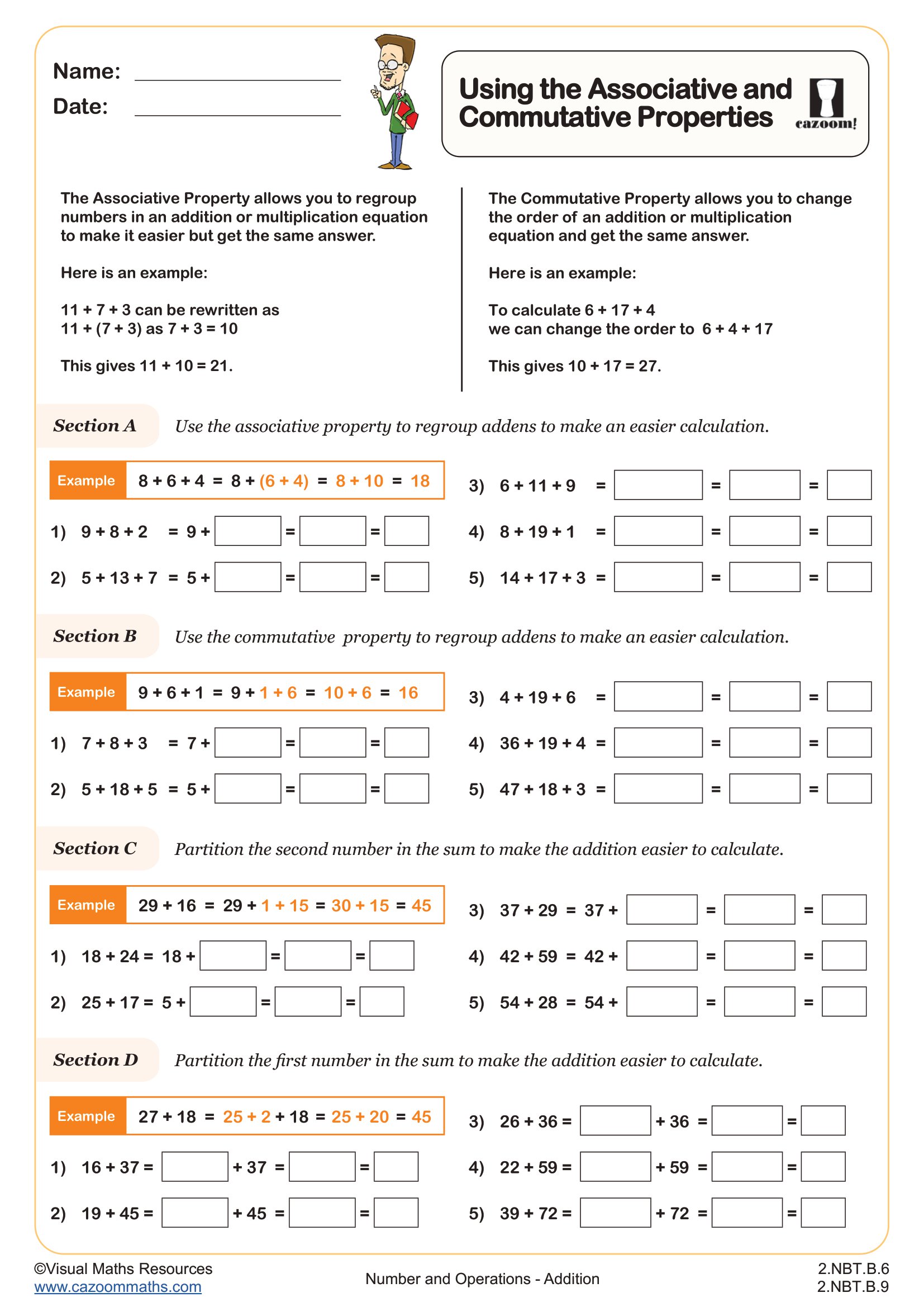
Printable Worksheets for Adding up to 100 with Answers
Download our printable Adding Numbers up to 100 worksheets with answer keys right now to support your students in their early math practice. Each of our basic addition worksheets uses a step-by-step approach to help your students in 1st Grade and 2nd Grade learn how to add numbers quickly and accurately. The activities include topics like- Adding 5 to 2 digit numbers, Addition Coloring, Addition Using Number Cubes, Using the Associative and Commutative Properties, and more. These additional facts are therefore ideal for school teachers, parents, and homeschoolers looking to support their learners and children. Practicing our math resources often will help your Elementary School children be able to improve their number sense and build the important addition skills they will need for advanced math topics in future.
What Is Addition up to 100?
Addition up to 100 means adding two numbers where the total does not go over 100. Let’s take an example, students might solve 67 + 12 or 49 + 25. This important basic math skill helps your young students understand how numbers work together. Hence, addition is a key part of math learning in first grade and second grade. Sometimes they might use number lines, or otherwise they can also use different processes like counting on fingers, or use objects. Mastering addition fluency and prepares students for other important number skills like- subtraction, place value, and more complex math in higher grades.
Why Practice Adding Up to 100?
Practicing how to add numbers to 100 helps students improve their fluency and problem-solving skills. This type of practice supports better test performance, greater speed, and a deeper understanding of math facts. Our worksheets include adding 2-digit numbers with regrouping worksheets and no regrouping practice, giving learners a chance to master both methods. These resources are also helpful for review and differentiation in the classroom. With simple layouts and answer keys included, they are easy to print and use in any learning environment.
Real-Life Uses of Adding Up to 100
The ability to add numbers up to 100 is a skill that frequently arises in everyday situations. Let us take some real-life examples- your children encounter opportunities to use this skill in various contexts, whether they are counting their collection of toys, figuring out how many snacks they have in total after sharing with a friend, or even calculating the combined cost of small items. These practical applications help students understand that mathematics is not just an abstract concept learned in the classroom but a valuable tool for making sense of the world around them. By engaging with worksheets that present addition problems in a relatable way, students build real-world confidence in their mathematical abilities. Regular use of these resources helps learners become quicker and more comfortable working with numbers in everyday scenarios, effectively preparing them for higher levels of mathematics and practical situations they will encounter outside the academic environment.